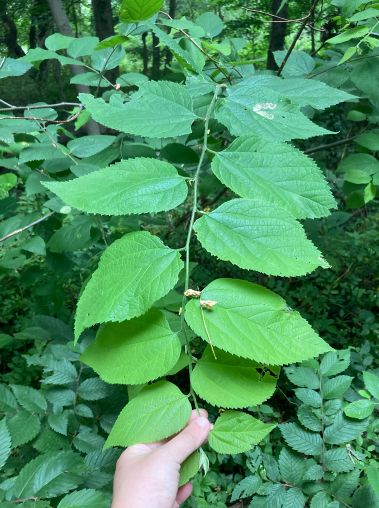Northern Hackberry
🌳 Northern Hackberry (Celtis occidentalis)
A true workhorse of the native landscape, the Northern Hackberry is tough, resilient, and wildlife-friendly. Known for its ability to thrive in challenging urban and rural sites alike, this tree is a champion of biodiversity—offering food, shelter, and beauty while anchoring an entire ecosystem beneath its canopy.
Characteristics
Type: Deciduous Tree
Height: 12–25 m (40–80 ft)
Blooms: April–May
Bloom Colour: Greenish (inconspicuous)
Growth Conditions
Light: Full Sun to Part Shade
Soil: Dry to Moist, Tolerates Clay, Sand, Limestone
Habitat: Woodland Edges, Open Woods, Riverbanks
Ecological Role
Larval Host: Supports Mourning Cloak (Nymphalis antiopa), Hackberry Emperor (Asterocampa celtis), and Tawny Emperor (Asterocampa clyton).
Wildlife Value: Produces small, sweet drupes eaten by birds and mammals; provides excellent cover for wildlife.
Ecosystem Service: Tolerant of urban conditions; contributes to windbreaks, slope stabilization, and canopy diversity.
Associated Species
Thrives alongside vibrant, drought-tolerant, and pollinator-friendly plants:
Argentina anserina (Silverweed)
Coreopsis lanceolata (Lance-leaved Coreopsis)
Elymus canadensis (Canada Wildrye)
Erigeron pulchellus (Robin’s Plantain)
Penstemon hirsutus (Hairy Beardtongue)
Solidago ptarmicoides (Upland White Goldenrod)
Symphyotrichum oolentangiensis (Sky-blue Aster)
Verbena stricta (Hoary Vervain)
Schizachyrium scoparium (Little Bluestem)
🌱 Planting to Protect Restoring to Thrive 🌱
Origin Native Plants
#NativeTrees #Hackberry #CeltisOccidentalis #MourningCloak #HackberryEmperor #TawnyEmperor #NativePlants #NativeFlowers #NativeGrasses #PollinatorGarden #NativePlantNursery #NativePlantSale #NativePlantGarden #NativePlantLandscape #WildlifeHabitat #OntarioNativePlants #GuelphNativePlants #EcologicalRestoration #NativePollinatorHabitat #ClimateResilientLandscaping #UrbanForest #BiodiversityGarden #RestorationEcology #TreesForWildlife #UrbanNativePlants #HabitatCreation #PlantNativeTrees

